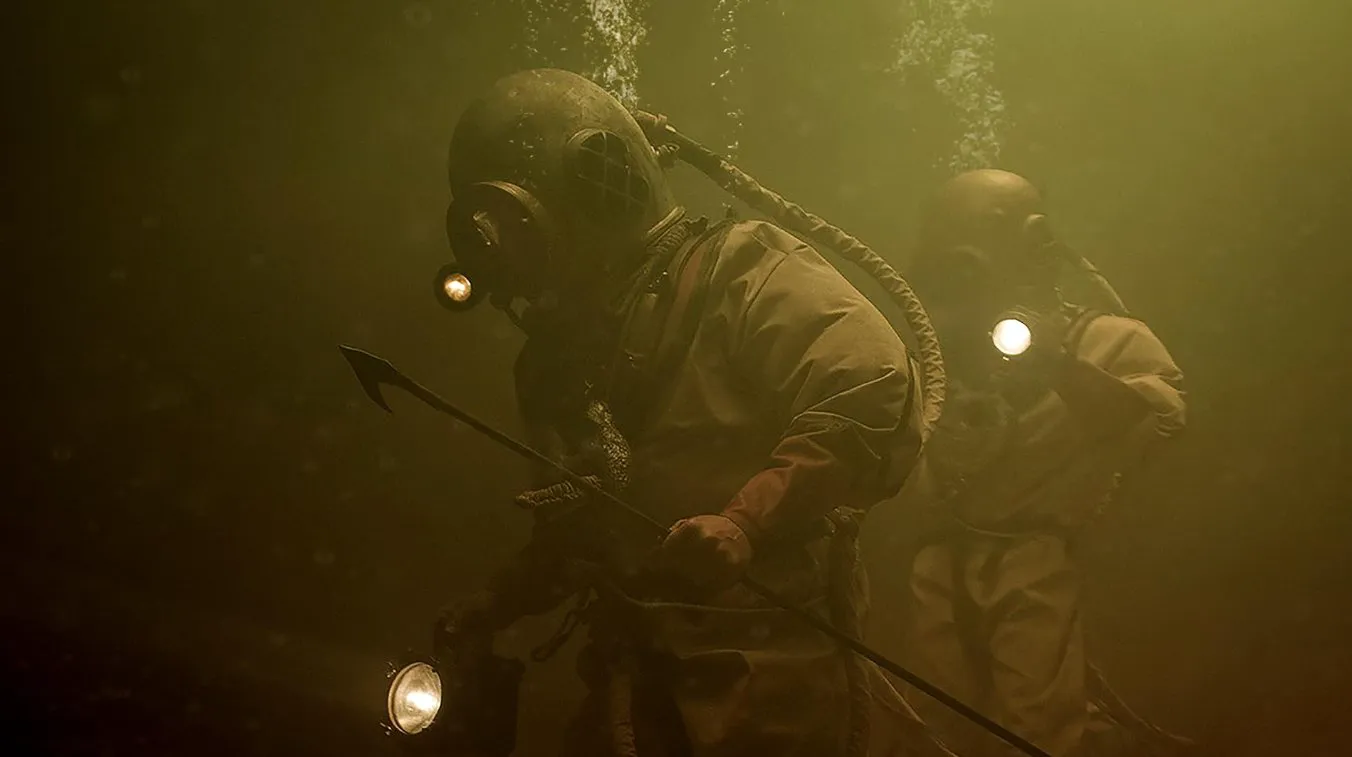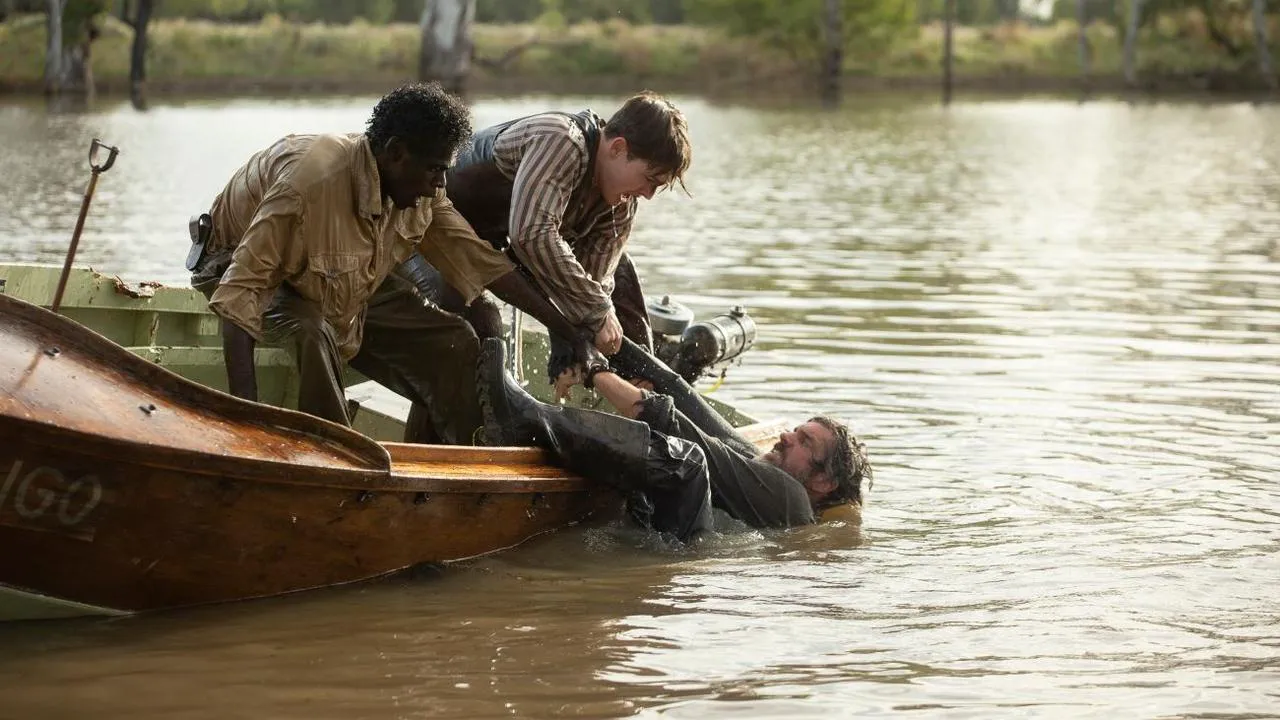Crimson Tide: A River Runs Red with Greed and Sharks
Ernie (Arthur Angel), a down-on-his-luck businessman, has a team of divers. Dylan (Jack Ryan), a similarly unfortunate mobster, has a sunken car filled with freshly stolen gold bars. Fate throws them together, each seeing the other as their last hope. But a third player enters the game: a massive river shark, eager to tear apart anyone who dares approach the precious cargo.

Scene from “Crimson Tide”
Everything you might learn about “Crimson Tide” beforehand suggests a shark-horror film in the vein of Spielberg’s timeless “Jaws.” That’s what makes watching this film, which subverts those expectations, so interesting. First and foremost, “Crimson Tide” is an intimate drama, even though it unfolds almost entirely outdoors on a river beach. Three divers and three mobsters initially seem to be working towards a common goal. Later, of course, it becomes clear that their interests are far from aligned, and survival isn’t guaranteed for anyone involved in this riverside rendezvous. The horror element in “Crimson Tide” takes a backseat – the shark is rarely seen, and the blood flows more like a trickling stream than a raging river.

Scene from “Crimson Tide”
A Deliberately Crafted Narrative
Director Matthew Holmes has crafted a very precise film, so streamlined that it almost feels like there’s nothing to grab onto. The protagonists are virtuous and innocent, presented with all the appropriate gender and ethnic diversity for 1940s Australia. The antagonists, on the other hand, are irredeemable, doing everything possible to avoid eliciting any sympathy. What saves “Crimson Tide” is the inspired choice of profession for the characters. Anyone can find themselves defenseless against a brazen gang of killers – thousands of films have explored that scenario – but how many of them showcase the details of eighty-year-old diving suits that resemble spacesuits? It’s the preparations for the dives that are most captivating to watch in this film.

Scene from “Crimson Tide”
Strong Performances Anchor the Film
Fortunately, “Crimson Tide” offers more than just diving sequences. The film features two performances that, while not groundbreaking, are very strong. Jack Ryan, who plays the main antagonist, can, at times, be mistaken for Kevin Costner. Hermione Corfield is responsible for the positive charisma in the film, and no matter how idealistic and naive her character may be, it’s impossible not to believe her radiant eyes. If the director had been a bit bolder, something other than hatred and contempt might have emerged between their characters, but “Crimson Tide” is as didactic and old-fashioned as it gets.
And perhaps, if you had to choose two words to describe the entire film, they would be “didacticism” and “old-fashioned.” “Crimson Tide” is perfect for television, not for the cinema. A comfortable runtime of 85 minutes, a strict moral in the ending, the absence of any special effects, or even effects in general, adherence to all the genre conventions without a hint of irony, and a single location for 95% of the runtime – director Matthew Holmes played it safe. And it’s not due to debutant timidity, but rather the experienced hand of a master – Holmes, who started as an animator, has been in live-action feature films for almost 20 years and knows exactly what he’s doing.
Predictable but Not Disappointing
In “Crimson Tide,” there’s no room for surprises, but there’s also no room for disappointment. The mechanism of a drama about small people confronting the criminal world was perfected to automation many decades ago, and director Holmes doesn’t bring anything new to it. But it’s precisely these films, so standard in their neutrality, that serve as the foundation for everything great or at least original that can be filmed by bolder authors.